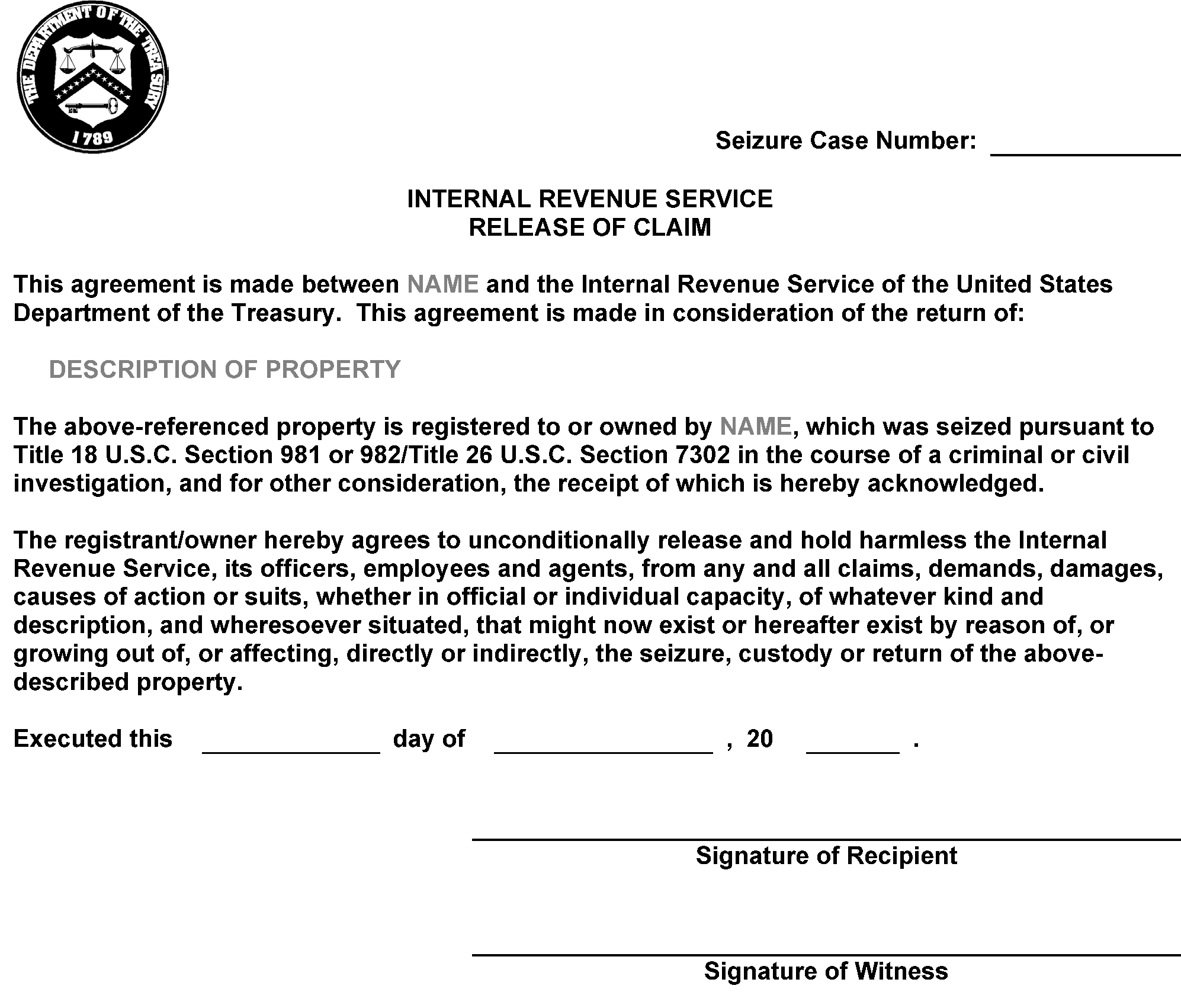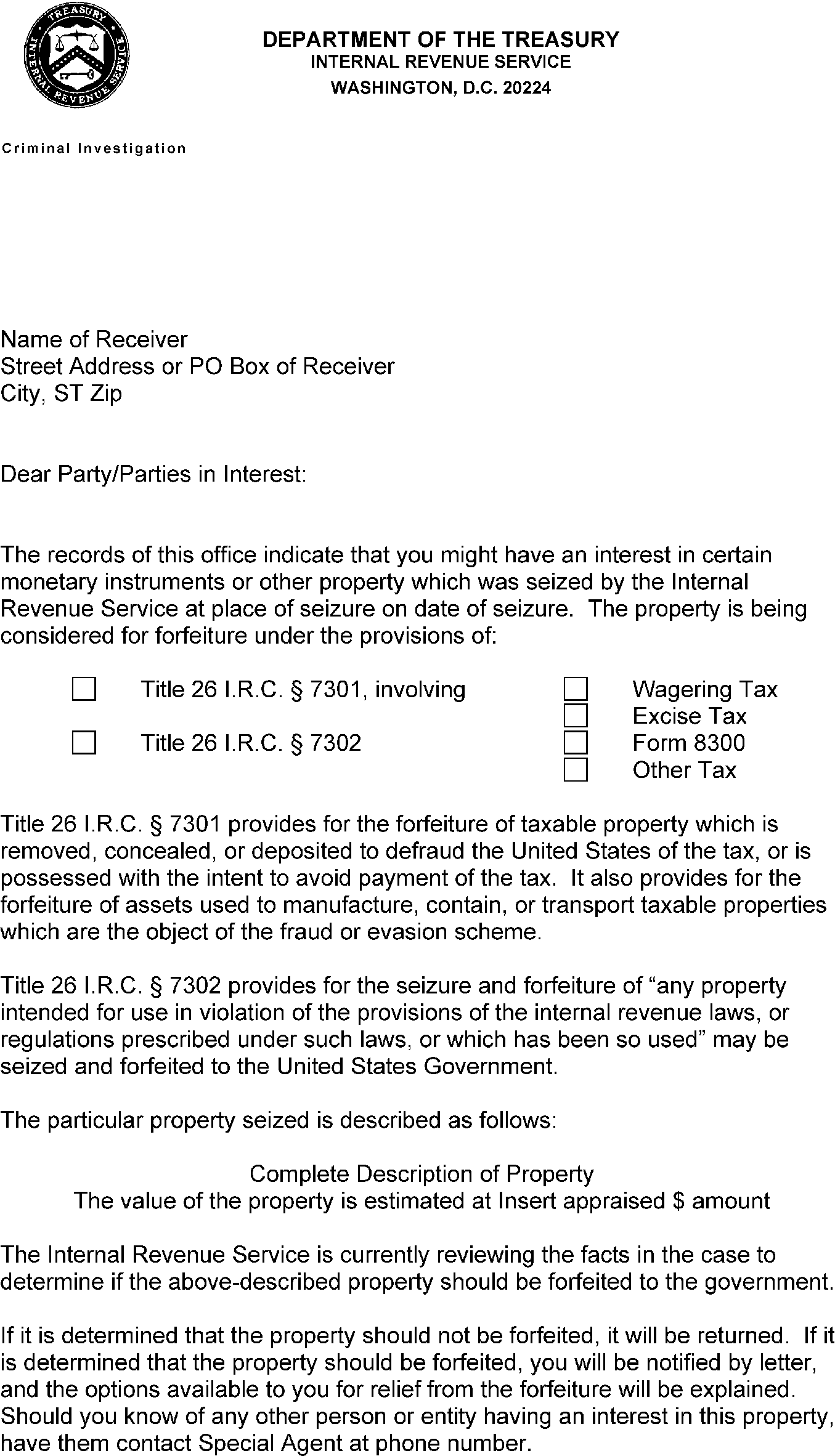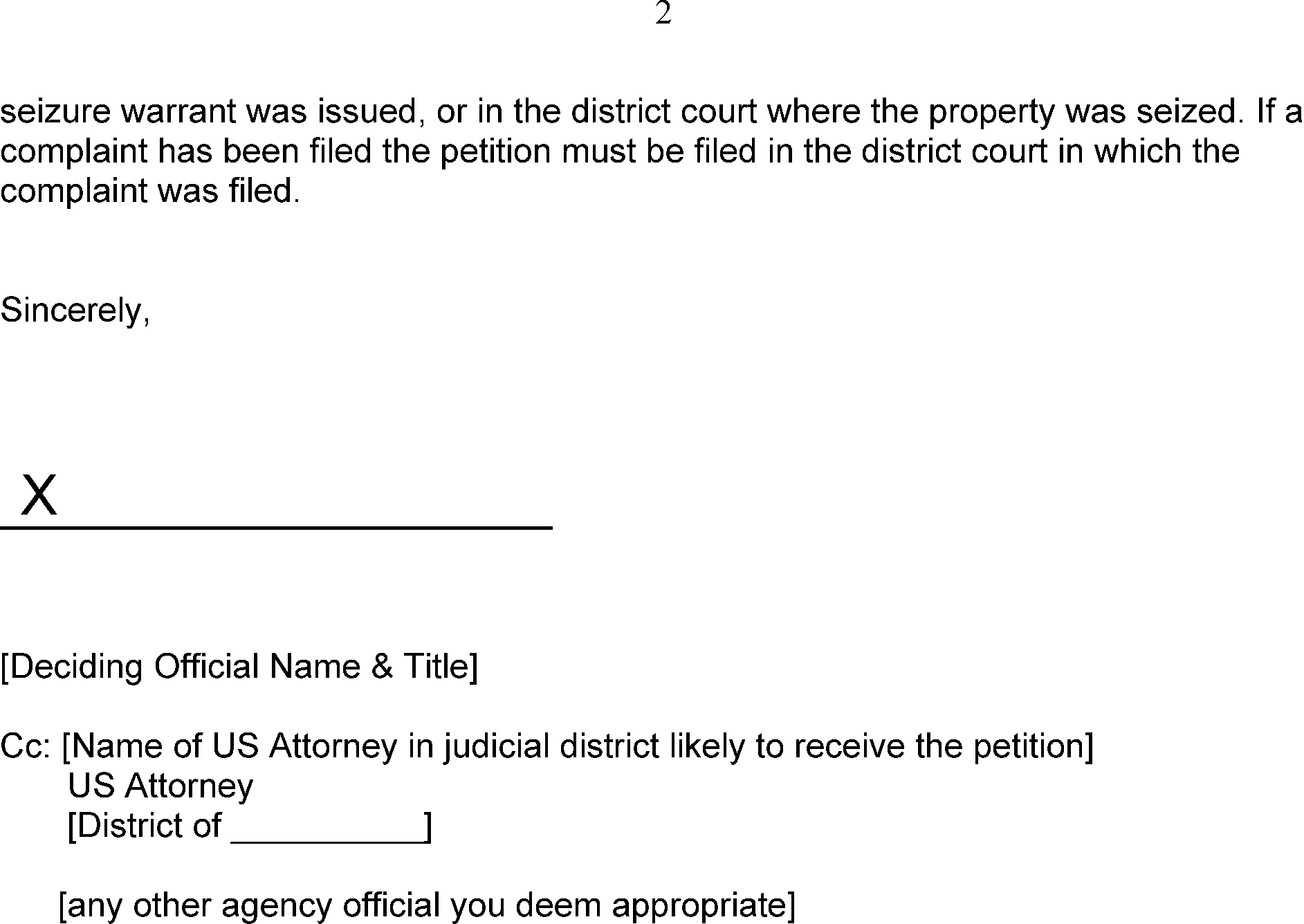- 9.7.7 Claims And Petitions
- 9.7.7.1 Program Scope and Objectives
- 9.7.7.1.1 Background
- 9.7.7.1.2 Authority
- 9.7.7.1.3 Roles and Responsibilities
- 9.7.7.1.4 Program Management and Review
- 9.7.7.1.5 Program Controls
- 9.7.7.1.6 Acronyms
- 9.7.7.1.7 Related Resources
- 9.7.7.2 Quick Release
- 9.7.7.2.1 Definition of Innocent Owner
- 9.7.7.2.2 Investigation of an Innocent Ownership Claim
- 9.7.7.3 Release of Seized Property (Hardship Petition)
- 9.7.7.3.1 Persons Who May File a Hardship Petition
- 9.7.7.3.2 Notification of Release of Seized Property (Hardship) Provision
- 9.7.7.3.3 Requirements for Immediate Release of Seized Property
- 9.7.7.3.4 Investigation of a Hardship Petition
- 9.7.7.3.5 Grant of a Hardship Petition
- 9.7.7.3.6 Denial of a Hardship Petition
- 9.7.7.4 Petitions for Remission or Mitigation
- 9.7.7.4.1 Effect of Petition on Forfeiture Proceedings
- 9.7.7.4.2 Content of a Petition for Remission or Mitigation
- 9.7.7.4.3 Procedure for Filing a Petition for Remission or Mitigation
- 9.7.7.4.4 Time Limits for Filing a Petition for Remission or Mitigation
- 9.7.7.4.5 Criteria for Remission
- 9.7.7.4.6 Criteria for Mitigation
- 9.7.7.4.7 Creditors
- 9.7.7.4.8 Investigation of a Petition for Remission or Mitigation
- 9.7.7.4.9 Processing a Petition for Remission or Mitigation
- 9.7.7.4.10 Grant of a Petition for Remission or Mitigation of Forfeiture
- 9.7.7.4.11 Terms and Conditions of Remission and Mitigation
- 9.7.7.4.12 Denial of a Petition for Remission or Mitigation of Forfeiture
- 9.7.7.4.13 Request for Reconsideration
- 9.7.7.4.14 Petition for Restoration of the Proceeds
- 9.7.7.5 Transfer of Forfeited Assets to Victims
- Exhibit 9.7.7-1 IRS Release of Claim
- Exhibit 9.7.7-2 Form 5914 - Release and Receipt of Property
- Exhibit 9.7.7-3 Agreement for the Release of Seized Property
- Exhibit 9.7.7-4 Seizure Notice Letter - Intent to Forfeit - Title 18
- Exhibit 9.7.7-5 Seizure Notice Letter - Intent to Forfeit - Title 31
- Exhibit 9.7.7-6 Seizure Notice Letter - Intent to Forfeit - Title 26
- Exhibit 9.7.7-7 Petitioner Denial Letter
- Exhibit 9.7.7-8 Mitigation Guidelines
- Exhibit 9.7.7-9 First Offense Warning Letter
- 9.7.7.1 Program Scope and Objectives
Part 9. Criminal Investigation
Chapter 7. Asset Seizure and Forfeiture
Section 7. Claims And Petitions
9.7.7 Claims And Petitions
Manual Transmittal
August 26, 2025
Purpose
(1) This transmits revised IRM 9.7.7, Claims and Petitions.
Material Changes
(1) Updated internal controls.
(2) Updated all IRMs, forms, and websites to quick links throughout the IRM.
(3) Updated “Asset Forfeiture and Money Laundering Section” to “Money Laundering and Asset Recovery Section (MLARS)” throughout the IRM.
(4) Subsection 9.7.7.2 updated entire section to state current procedures and removed paragraph (4).
(5) Subsection 9.7.7.2.1(1) updated to “Anyone with an ownership interest in property to be forfeited may assert as a defense that they are an "innocent owner." The requirements for the innocent owner defense are contained in 18 USC 983(d).”
(6) Added subsection 9.7.7.2.1(2) “There are two different innocent owner defenses to forfeiture proceedings. One applies to persons who held their interest in the property while the illegal activity was occurring, and the other applies to persons who acquired their interest in the property after the illegal activity occurred.”
(7) Subsection was renumbered to 9.7.7.2.1(3) updated to “A person who had an interest in the property at the time the illegal activity was occurring can establish that they are an innocent owner by showing:”.
(8) Subsection was renumbered to 9.7.7.2.1(4) updated to “Examples of how an owner may show that they did all that reasonably could be expected may include demonstrating that they:”.
(9) Added subsection 9.7.7.2.1(4)(c) “However, a person is not required to take steps that they reasonably believe would be likely to subject any person to physical danger.”
(10) Subsection was renumbered to 9.7.7.2.1(5) updated to “A person who acquired an interest in the property after the illegal activity occurred can establish that they are an innocent owner by showing that:”
(11) Subsection 9.7.7.2.1(5)(a) updated to “ They were a bona fide (good faith) purchaser or seller for value.”
(12) Subsection 9.7.7.2.1(5)(b) updated to “At the time they acquired the interest, they did not know and were reasonably without cause to believe that the property was subject to forfeiture.”
(13) Subsection 9.7.7.2.2(1) updated “make the determination” to “determine”.
(14) Subsection 9.7.7.2.2(3) moved “executed” before “Release of Claim” and added “see Exhibit 9.7.7-2, Form 5914 - Release and Receipt of Property.”
(15) Subsection 9.7.7.2.2(4) updated to “The basis for any quick release of seized property must be documented in the seizure/forfeiture file. This should include the SACs reasoning for quick release of the property and/or the SACs reasoning for rejecting an innocent owner claim and not releasing the property.”.
(16) Subsection 9.7.7.3(1) updated to “In non-criminal forfeiture actions, a person is entitled to immediate release of seized property if they have filed a claim to the property and satisfy the requirements for a hardship petition. See 18 USC 983(f).”
(17) Subsection 9.7.7.3(2) removed “CI Connections” and added “ARIS SharePoint site” to the end of the paragraph.
(18) Subsection 9.7.7.3.1(1) updated to “A person cannot file a hardship petition unless they have first filed a claim to the seized property. See IRM 9.7.2.7 for the process to file a claim.”
(19) Subsection 9.7.7.3.3 updated section title to “Requirements for Immediate Release of Seized Property.”
(20) Subsection 9.7.7.3.3(1) updated to “A claimant seeking immediate release of seized property must submit a hardship petition in writing.”
(21) Subsection 9.7.7.3.3(2) updated to “A claimant is entitled to immediate release of seized property if they establish that the following requirements are met:”.
(22) Subsection 9.7.7.3.3(2)(c) updated to “The government's continued possession while the forfeiture proceedings are pending will cause substantial hardship to the claimant or someone else, such as preventing the functioning of a business; preventing an individual from working; or leaving an individual homeless.”
(23) Subsection 9.7.7.3.3(4) updated to “Certain property may not be released to a claimant through a hardship petition, including:”
(24) Subsection 9.7.7.3.3(4)(d) updated to “Property that, by reason of design or other characteristic, is particularly suited for use in illegal activities (examples include cars with hidden compartments, property altered for some illegal purpose), or”.
(25) Subsection 9.7.7.3.3(5) moved “Note” to paragraph (6).
(26) Removed subsection 9.7.7.3.3(7) due to duplicate information.
(27) Subsection 9.7.7.3.5(1) added “when warranted”.
(28) Subsection 9.7.7.3.5(2) added “when warranted”.
(29) Subsection 9.7.7.3.5(3) removed “Attachment D of Directive 35” and updated exhibit reference to “Exhibit 9.7.7-3, Agreement for the Release of Seized Property.”
(30) Subsection 9.7.7.3.6(1) removed “(Directive Number 35 - Attachments B and C)” and “contain sample denial letters; either letter is appropriate”, and updated exhibit to “Exhibit 9.7.7-7, Petitioner Denial Letter.”
(31) Subsection 9.7.7.4.1(3) updated to current procedures.
(32) Subsection 9.7.7.4.4(2) updated to first part of paragraph to “Petitions for remission or mitigation should be reviewed and can be considered ......”
(33) Removed subsection 9.7.7.4.6(4).
(34) Subsection 9.7.7.4.8(2) reword for clarity, “The Deputy Director, Global Operations Policy & Support (GO) is the designated CI official authorized to grant or deny a petition for remission or mitigation of forfeiture of property seized under 18 USC 981 in an administrative forfeiture action. Any CI Executive also has the authority to grant or deny petitions.”
(35) Subsection 9.7.7.4.8(3) removed “whenever possible”.
(36) Removed subsection 9.7.7.4.8(6).
(37) Subsection 9.7.7.4.9(4) updated “30 days” to “60 days”.
(38) Subsection 9.7.7.4.10(1) updated second sentence for clarity, “The letter to the petitioner will be prepared by, or with assistance, from the Division Counsel.”
(39) Subsection 9.7.7.4.10(2) updated exhibit reference to Exhibit 9.7.7-7 and “The warning letter should also be included in correspondence to the petitioner” at the end of the paragraph.
(40) Subsection 9.7.7.4.13(1)(b) added “The AFC and/or other field personnel assigned, must review the information or evidence for validity and submit their conclusions and recommendation to the SAC or their delegate for decision” at the end of the paragraph.
(41) Subsection 9.7.7.4.13(2) added “A valid request for reconsideration will be decided by the CI, Deputy Chief” after the first sentence.
(42) Subsection 9.7.7.5(1) updated “Mandatory restitution to victims of certain crimes” to the correct title of “Mandatory Victims Restitution Act”.
(43) Subsection 9.7.7.5(2) updated the first sentence to start “The Attorney General and the Secretary of the Treasury are authorized to transfer forfeited property as......”.
(44) Subsection 9.7.7.5(4) removed “on AFTRAK” and added “and saved within the CI asset tracking database and the seizure/forfeiture files”.
(45) Updated Exhibit 9.7.7-1, IRS Release of Claim with current document.
(46) Added Exhibit 9.7.7-2, Form 5914 - Release and Receipt of Property.
(47) Updated Exhibit 9.7.7-3, Agreement for the Release of Seized Property with current document.
(48) Updated Exhibit 9.7.7-4 to Seizure Notice Letter - Intent to Forfeit - Title 18.
(49) Updated Exhibit 9.7.7-5 to Seizure Notice Letter - Intent to Forfeit - Title 31.
(50) Updated Exhibit 9.7.7-6 to Seizure Notice Letter - Intent to Forfeit - Title 26.
(51) Updated Exhibit 9.7.7-7 to Petitioner Denial Letter.
(52) Added Exhibit 9.7.7-8, First Offense Warning Letter.
(53) Editorial changes made that did not result in substantive changes but contributed to clarity of the subject matter.
Effect on Other Documents
This IRM supersedes IRM 9.7.7 dated February 12, 2025.Audience
Criminal InvestigationEffective Date
(08-26-2025)
Justin H. Campbell
Deputy Chief, Criminal Investigation
for
Guy A. Ficco
Chief, Criminal Investigation
-
Purpose: This section provides detailed guidelines for the roles and responsibilities of Criminal Investigation employees and government partners, as it relates to the processing of claims and petitions.
-
Audience: All Criminal Investigation employees.
-
Policy Owner: Executive Director, Global Operations Policy & Support.
-
Program Owner: Director, Asset Recovery and Investigative Services.
-
Primary Stakeholders: All Criminal Investigation employees.
-
Contact Information: To make changes to this IRM email *CI-HQ-IRM.
-
When property is seized for forfeiture, there may be several individuals or entities that have claims to the property, including the individual from whom it was seized. This section will discuss the types of requests for the seized property and how to relinquish custody and return seized property. The types of requests include:
-
Quick Release
-
Release of Seized Property Based on Hardship
-
Petitions for Remission or Mitigation
-
-
Claims filed in an administrative forfeiture action requesting judicial determination are discussed in IRM 9.7.2, Civil Seizure and Forfeiture.
-
See IRM 1.2.2.10.1, Delegation Order 9-1 (Formerly DO-157, Rev. 7), Seizure and Forfeiture of Personal Property and IRM 1.2.2.10.2, Order Number 9-2 (Formerly DO-158, Rev. 2), Initiate Investigations and Seize and Forfeit Property under the Money Laundering Control Act and Bank Secrecy Acts for the delegated authority relating to IRM 9.7.7, Claims and Petitions.
-
The Director, Asset Recovery and Investigative Services is responsible for developing, maintaining, and overseeing this IRM and ensuring employee compliance with current policies and procedures.
-
The Director, Asset Recovery and Investigative Services will:
-
Review this IRM annually for procedural, operational, and editorial changes.
-
Ensure internal control content is complete, accurate, and reviewed annually.
-
Update this IRM when content is no longer accurate.
-
Incorporate interim guidance into the next revision of the IRM section prior to the expiration date.
-
-
The Director, Asset Recovery and Investigative Services will review the instructions and guidelines relating to the investigation of tax returns and other IRS documents for procedural, operational, and editorial changes.
-
The Director, Asset Recovery and Investigative Services will review and oversee their programs as well as ensuring employee compliance with all applicable elements of this IRM.
-
The table lists the acronyms used throughout this IRM section and their definitions:
Acronym Definition AFC Asset Forfeiture Coordinator ARIS Asset Recovery and Investigative Services AUSA Assistant U.S. Attorney CI Criminal Investigation CT Criminal Tax GO Global Operations Policy & Support MLARS Money Laundering and Asset Recovery Section SAC Special Agent in Charge TEOAF Treasury Executive Office for Asset Forfeiture USAO United States Attorney’s Office
-
18 USC 981, Civil forfeiture.
-
18 USC 982, Criminal forfeiture.
-
18 USC 983, General rules for civil forfeiture proceedings.
-
18 USC 3663A, Mandatory restitution to victims of certain crimes.
-
28 CFR 8.7, Release before claim.
-
28 CFR 9.6(f), Special rules for specific petitioners - Judgment creditors.
-
28 CFR 9.7, Terms and conditions of remission and mitigation.
-
31 USC 5313, Reports on domestic coins and currency transactions.
-
31 USC 5324, Structuring transactions to evade reporting requirement prohibited.
-
IRM 9.7.2, Civil Seizure and Forfeiture.
-
IRM 9.7.4, Pre-Seizure Planning.
-
Following federal seizure for forfeiture, certain property may be released before anyone files a claim on it. This process, called "quick release," is authorized pursuant to 28 CFR 8.7, Release before claim.
-
The Special Agent in Charge (SAC) is authorized to "quick release" seized property in administrative forfeiture proceedings.
-
Property that is not contraband or evidence of a violation of law may be quick released when the SAC deems that an innocent owner has an immediate right to possession of the property, the property does not meet asset-specific net equity threshold, or release would be in the best interest of justice or the government.
-
While such issues ideally should be resolved in pre-seizure planning, post-seizure quick release may be used whenever warranted.
-
Determining the appropriate party to whom the property should be released will depend on the nature of the seized property and the particular circumstances.
-
If the property has no registered owner, like currency, it should be returned to the person from whom it was seized.
-
If there is a registered owner of the property, such as an automobile, the property should be returned to that party, regardless of whether there is a lien or other third-party interest with ownership rights to the property. However, if a third-party such as a lienholder asserts its contractual rights in a judicial proceeding and obtains a final judgment which provides satisfactory proof of its ownership interest and right to immediate possession of the property, the seizing agency may return the property to that party instead of the registered owner.
-
Similarly, if a state court authorizes a state or local law enforcement agency to take possession of the seized property, the request should be honored. If the seizing agency is aware of a third party with ownership interest in the property, regardless of whether they have asserted any contractual rights to immediate possession, the agency may notify the third party in advance of release to the registered owner.
-
-
Anyone with an ownership interest in property to be forfeited may assert as a defense that they are an "innocent owner." The requirements for the innocent owner defense are contained in 18 USC 983(d), Innocent Owner Defense.
-
There are two different innocent owner defenses to forfeiture proceedings. One applies to persons who held their interest in the property while the illegal activity was occurring, and the other applies to persons who acquired their interest in the property after the illegal activity occurred.
-
A person who had an interest in the property at the time the illegal activity was occurring can establish that they are an innocent owner by showing:
-
They did not know of the conduct giving rise to forfeiture; or
-
Upon learning of the conduct giving rise to the forfeiture, did all that reasonably could be expected under the circumstances to terminate such use of the property.
-
-
Examples of how an owner may show that they did all that reasonably could be expected may include demonstrating that they:
-
Gave timely notice to an appropriate law enforcement agency of information that led the person to know the conduct giving rise to a forfeiture would occur or has occurred, and
-
In a timely fashion revoked or made a good faith attempt to revoke permission for those engaging in such conduct to use the property or took reasonable actions in consultation with a law enforcement agency to discourage or prevent the illegal use of the property.
-
However, a person is not required to take steps that they reasonably believe would be likely to subject any person to physical danger.
-
-
A person who acquired an interest in the property after the illegal activity occurred can establish that they are an innocent owner by showing that:
-
They were a bona fide (good faith) purchaser or seller for value.
-
At the time they acquired the interest, they did not know and were reasonably without cause to believe that the property was subject to forfeiture.
-
-
A person claiming to be an innocent owner has the burden of proving that they are an innocent owner and must show satisfactory proof of ownership or an ownership interest.
-
See Exhibit 9.7.7-4, Seizure Notice Letter - Intent to Forfeit - Title 18.
-
See Exhibit 9.7.7-5, Seizure Notice Letter - Intent to Forfeit - Title 31.
-
See Exhibit 9.7.7-6, Seizure Notice Letter - Intent to Forfeit - Title 26.
-
-
The investigating agent, in coordination with the Asset Forfeiture Coordinator (AFC), will timely investigate the merits of an innocent ownership claim based on the criteria above and report the results of the investigation to the SAC, who will decide whether to authorize the quick release.
-
If the SAC determines that the person is not an innocent owner, the property will be retained, and the forfeiture action will continue.
-
If the SAC determines that the person is an innocent owner and authorizes the quick release, an executed Release of Claim and a Form 5914, Release and Receipt of Property, should be obtained from the innocent owner at the time the property is returned. See Exhibit 9.7.7-1, IRS Release of Claim, and , Form 5914 - Release and Receipt of Property.
-
The basis for any quick release of seized property must be documented in the seizure/forfeiture file. This should include the SACs reasoning for quick release of the property and/or the SACs reasoning for rejecting an innocent owner claim and not releasing the property.
-
In non-criminal forfeiture actions, a person is entitled to immediate release of seized property if they have filed a claim to the property and satisfy the requirements for a hardship petition. See 18 USC 983(f), Release of Seized Property.
-
In light of the Civil Asset Forfeiture Reform Act of 2000 hardship petition provisions, the Treasury Executive Office for Asset Forfeiture (TEOAF) issued Directive Number 35, Review of Hardship Petitions Filed Pursuant to 18 USC 983(f). The policy directive is intended to provide basic guidance on the seizing agency's responsibilities regarding . hardship petitions under 18 USC 983(f). see Directive Number 35 on the Asset Recovery and Investigative Services ARIS SharePoint site.
-
A person cannot file a hardship petition unless they have first filed a claim to the seized property. See IRM 9.7.2.7, Administrative Forfeiture Proceedings, for the process to file a claim.
-
Directive Number 35 instructs seizing agencies to provide appropriate information regarding the release of seized property (hardship) in the written notice sent to interested parties.
-
The information required in a notice letter includes:
-
Who may file a hardship petition.
-
How to file a hardship petition.
-
The procedures for petitioning the court if the seizing agency does not release the seized property within 15 days.
-
-
A claimant seeking immediate release of seized property must submit a hardship petition in writing.
-
A claimant is entitled to immediate release of seized property if they establish that the following requirements are met:
-
The claimant has a possessory interest in the property.
-
The claimant has sufficient ties to the community to provide assurance that the property will be available at the time of the trial.
-
The government's continued possession while the forfeiture proceedings are pending will cause substantial hardship to the claimant or someone else, such as preventing the functioning of a business; preventing an individual from working; or leaving an individual homeless.
-
The claimant's likely hardship from the government's continued possession of the property outweighs the risk that the property will be destroyed, damaged, lost, concealed, or transferred if it is returned to the claimant during the pendency of the proceeding.
-
-
If the claimant fails to establish any of the requirements listed above, the hardship petition must be denied.
-
Certain property may not be released to a claimant through a hardship petition, including:
-
Contraband,
-
Currency, monetary instruments, or electronic funds (such as bank accounts) unless such currency, monetary instruments, or electronic funds are the assets of a legitimate business which has been seized,
-
Property to be used as evidence of a violation of the law,
-
Property that, by reason of design or other characteristic, is particularly suited for use in illegal activities (examples include cars with hidden compartments, property altered for some illegal purpose), or
-
Property likely to be used to commit additional criminal acts if returned to the claimant.
-
-
A hardship petition requesting seized property that falls within any of the categories listed in (4) above must be denied.
-
The AFC is responsible for recording the date a hardship petitioner requests a release of property and the date the agency received the request.
-
The investigating agent, in coordination with the AFC, will timely investigate the merits of a hardship petition and will report the results of the investigation by memorandum to the SAC. This will enable the seized property to be returned within 15 days of receipt of the hardship petition in the event the hardship petition is granted.
-
The SAC has delegated authority to grant or deny a hardship petition.
-
As some US Attorney's Offices (USAO) may want to be involved in the hardship petition process, the AFC may facilitate coordination between USAO and Criminal Investigation (CI) as directed by the SAC.
-
If the SAC grants a hardship petition, the seized property must be released within 15 days of the SAC’s decision and/or receiving the hardship petition, whenever warranted.
-
The AFC will work closely with the seized property contractor to achieve return of the seized property within 15 days of the SAC’s decision and/or receiving the hardship petition, whenever warranted.
-
The statute, 18 USC 983(f), does not authorize the seizing agency to take specific protective action to ensure the value of seized property released pursuant to a hardship petition. A general release should be used to protect the government from certain liabilities and inform the petitioner that the seizing agency reserves the right to retake possession of the property if it is used in violation of federal law. The release is contained in Exhibit 9.7.7-3, Agreement for the Release of Seized Property.
-
The signature of the claimant or party to whom the seized property will be released should be obtained on the release. The claimant's refusal to sign the release is not a basis for denying the hardship petition. A claimant that refuses to sign a release should be provided a copy to document that they were made aware of the contents of the release.
-
The AFC should notify and/or consult with the Assistant U.S. Attorney (AUSA) responsible for the forfeiture prior to the release of seized property when a hardship petition is granted.
-
If a hardship petition is denied, a letter stating the statutory basis for the denial will be prepared by the AFC for the signature of the SAC and sent to the claimant. Exhibit 9.7.7-7, Petitioner Denial Letter. The denial letter does not need to include specific reasons for the denial, although such specific information should be well documented in the seizure/forfeiture file. The denial letter will be sufficient if it states the general statutory basis for the denial and explains the other relief available to the petitioner.
-
The AFC should notify and/or consult with the AUSA responsible for the forfeiture of the decision on a hardship petition prior to sending a denial letter.
-
The remission or mitigation of forfeiture is a remedy designed to lessen the harshness of the forfeiture sanction. A petition for remission or mitigation is a request for an Executive Branch pardon of the property or an interest therein, based on either the good faith of the petitioner and their innocence, or the lack of knowledge of the underlying unlawful conduct. In the case of the violator, it is a plea for leniency.
-
Petitions for remission or mitigation are separate and independent of civil (administrative or judicial) or criminal forfeiture proceedings.
-
An individual or entity with an ownership interest in the property seized for forfeiture may contest the forfeiture by filing a claim, filing a petition for remission or mitigation, or both. The filing of a petition does not waive or suspend any time limits for filing a claim requesting a judicial determination of the forfeiture.
-
When a petition for remission or mitigation of forfeiture is filed in an administrative or civil judicial forfeiture action, the forfeiture process, including the publication of the notice of seizure, will continue as scheduled. However, once the property is forfeited, it shall not be placed into official use, sold, or otherwise disposed of according to law until final action is taken on the petition.
-
When an interested party in an administrative forfeiture action has filed a claim requesting a judicial determination of the forfeiture, and another interested party has filed a petition for remission or mitigation, the investigation related to the petition will be terminated and the further processing of the petition handled by USAO. The petition and associated evidence will be included in the referral of the claim from the SAC to USAO. Occasionally, the USAO requests a recommendation from CI regarding the petition. If requested, the SAC will provide the recommendation. See IRM 9.7.2, Civil Seizure and Forfeiture.
-
There is no prescribed format for a petition for remission or mitigation. The written notice sent to interested parties in an administrative forfeiture action includes the procedure to request relief through the petition process and advises that:
-
The petition must identify the property seized, the date of seizure, and proof of ownership interest in the property.
-
The petition should describe the facts and circumstances that justify the return of the property.
-
Copies of documentary evidence should be submitted where appropriate.
-
The petition should be signed under oath subject to the penalty of perjury.
-
-
Petitions for remission or mitigation in an administrative forfeiture action should be addressed to the SAC of the field office responsible for the forfeiture. Petitions in civil judicial or criminal forfeiture proceedings should be addressed to the Attorney General and submitted to the U.S. Attorney for the judicial district where the forfeiture proceedings are brought.
-
The written notice sent to interested parties in an administrative forfeiture action advises that a petition for remission or mitigation must be filed within 35 days of the mailing of the letter.
-
Petitions for remission or mitigation should be reviewed and can be considered any time after written notice is sent to interested parties, after the property is forfeited and until the forfeited property is placed into official use, sold, or otherwise disposed of according to law, except in cases involving petitions to restore the proceeds.
-
A petitioner seeking remission of civilly forfeited property, must establish:
-
A valid, good faith, and legally cognizable interest in the seized property as owner or lienholder; and
-
That they are an innocent owner within the meaning of 18 USC 983(d).
-
-
The petitioner has the burden of proving that they are an innocent owner by the preponderance of the evidence.
-
Mitigation may be granted to a party not involved in the commission of the offense underlying the forfeiture where:
-
The petitioner has not met the minimum conditions for remission, but the deciding official finds that some relief should be granted to avoid extreme hardship and that return of the property combined with imposition of monetary and/or other conditions of mitigation in lieu of a complete forfeiture will promote the interest of justice and will not diminish the deterrent effect of the law; or
-
The minimum standards for remission have been satisfied but the overall circumstances are such that complete relief is not warranted.
-
-
Mitigation may be granted to a party involved in the commission of the offense underlying the forfeiture where certain mitigating factors exist, including, but not limited to the:
-
Lack of a prior record or evidence of similar criminal conduct.
-
Violation was minimal and was not part of a larger criminal scheme.
-
Violator has cooperated with federal, state, or local investigations relating to the criminal conduct underlying the forfeiture; or
-
Complete forfeiture of an asset is not necessary to achieve the legitimate purposes of forfeiture.
-
-
Mitigation may take the form of a monetary condition or the imposition of other conditions relating to the continued use of the property or the return of the property, in addition to the imposition of any other costs that would be chargeable as a condition to remission. This monetary condition is considered as an item of cost payable by the petitioner and shall be deposited into the Treasury Forfeiture Fund as an amount realized from forfeiture.
-
A general creditor is one whose claim or debt is not secured by a specific right to obtain satisfaction against the particular property subject to forfeiture. Unsecured general creditors are not entitled to remission or mitigation since they are unable to directly trace their ownership interest to identifiable assets in the forfeiture pool. The petitioner may have grounds that entitles them to bring a suit against the violator on the debt but will have no specific interest in the property subject to forfeiture. Trade creditors, who have breach of contract actions against the violator or former employees with claims for employee benefits, have no standing to file petitions for the same reason. The situation is different if the creditor has reduced their claim to a judgment and obtained a judgment lien against specific assets.
-
A judgment creditor is one who has obtained a judgment against a debtor/violator but has not yet received full satisfaction of the judgment. A judgment creditor may qualify as a lienholder entitled to remission if it meets certain conditions. For more information regarding judgment creditors, see 28 CFR 9.6(f), Special rules for specific petitioners - Judgment creditors.
-
In an administrative forfeiture action, once a petition for remission or mitigation has been filed, the agency that seized the property is responsible for investigating the merits of the petition and submitting a report on the investigation to the deciding official. In a judicial forfeiture action, the AUSA must submit the petition, with any requested report of the investigation by the seizing agency and their recommendation, to the Department of Justice Money Laundering and Asset Recovery Sections (MLARS) for a final determination.
-
The Deputy Director, Global Operations Policy & Support (GO) is the designated CI official authorized to grant or deny a petition for remission or mitigation of forfeiture of property seized under 18 USC 981, in an administrative forfeiture action. Any CI Executive also has the authority to grant or deny petitions.
-
Where the petition for remission or mitigation alleges facts not previously considered or that are unsupported, it may be necessary to investigate these issues before the merits of the petition can be evaluated. The investigation of a petition filed in an administrative forfeiture action will be completed within 30 days of receipt. If a petition refers to the existence of evidence that was not included with the petition, the petitioner will be allowed a reasonable period of time (such as 10 days) to submit the evidence. The investigation of a petition must be thorough, accurate, and conclusive to support the actions taken by the Deputy Director, GO. An inordinate amount of time and effort should not be expended addressing irrelevant claims.
-
The petitioner's cooperation in an investigation of a petition for remission or mitigation is paramount. A petitioner should be advised that failure to cooperate or to provide requested information or documents and submit to interviews might result in denial of the petition.
-
A report of the investigation of a petition for remission or mitigation, with the field office recommendation to grant or deny the petition prepared in the form of a memorandum, will be forwarded from the SAC to the Division Counsel/Associate Chief Counsel (hereinafter referred to as Division Counsel) through the field Criminal Tax (CT) attorney. The SAC will ensure that all issues presented within the petition have been addressed in the report. The petition (evidence submitted by the petitioner, evidence supporting the recommendation by the field office, and any other relevant documentation that will assist Division Counsel in reviewing the petition) should be included with the report.
-
There are no specific time limits established by statute or case law for ruling on a petition for remission or mitigation. However, CI has established guidelines for processing petitions to prevent unreasonable or undue delay.
-
The SAC will forward the report of the investigation of a petition for remission or mitigation and the field office recommendation to grant or deny the petition to the Division Counsel, through the field CT attorney, within 30 days of receipt of the petition whenever possible.
-
The field CT attorney will review and forward to the Division Counsel the report of the investigation of a petition for remission or mitigation, the Law and Fact Memorandum previously prepared in the administrative forfeiture action, and any additional information, if applicable, within 15 days of receipt from CI.
-
The Division Counsel, after reviewing the report of the investigation of a petition for remission or mitigation and making any contacts with the investigating agent, AFC, or field CT attorney, as necessary for additional information, will prepare and submit the following to the Deputy Director, GO, within 60 days of receipt from the field CT attorney:
-
A Law and Fact Memorandum to the Deputy Director, GO, discussing the petition and the facts underlying the recommendation as to whether the petition should be granted or denied.
-
A proposed memorandum from the Deputy Director, GO, to the SAC, setting forth the authority of the Deputy Director, GO, to grant or deny the petition, and the decision to grant or deny the petition.
-
A proposed letter from the SAC to the petitioner, stating whether the petition has been granted or denied which includes instructions for the petitioner to follow if the petition has been granted and which will address the appeal rights of the petitioner if the petition has been denied.
-
-
The Deputy Director, GO, will review the factual situation and the recommendation of the Division Counsel in making the decision whether to grant or deny a petition for remission or mitigation. No hearing will be held.
-
The Deputy Director, GO, will forward the decision to grant or deny the petition for remission or mitigation to the SAC for implementation, using the memorandum and letter drafted by the Division Counsel, if in agreement, or by original documents if the decision of the Deputy Director, GO, differs from that recommended by the Division Counsel.
-
If the Deputy Director, GO, grants the petition for remission or mitigation, a decision letter from the SAC will be sent to the petitioner and/or the petitioner's attorney by certified mail, return receipt requested. The letter to the petitioner will be prepared by, or with assistance, from the Division Counsel.
-
A model first offense warning letter for violations of 31 USC 5313(a), Reports on domestic coins and currency transactions, and 31 USC 5324(a), Domestic coin and currency transactions involving financial institutions, is found in , First Offense Warning Letter. The warning letter should also be included in correspondence to the petitioner.
-
Costs incurred in the forfeiture that were incident to the forfeiture, sale, or other disposition of the property shall be deducted from the amount available for remission or mitigation. The Deputy Director, GO, has the discretion to waive the costs.
-
For detailed information on the terms and conditions of remission and mitigation for owners and lien holders, see 28 CFR 9.7, Terms and conditions of remission and mitigation.
-
If the Deputy Director, GO, denies the petition for remission or mitigation, a decision letter from the SAC will be sent to the petitioner and/or the petitioner's attorney by certified mail, return receipt requested. The letter to the petitioner, prepared by or with assistance from the Division Counsel, will advise the petitioner of the reasons for denial. The letter will also advise the petitioner of the right to appeal the decision of the Deputy Director, GO, by submitting a request for reconsideration of the denial.
-
A request for reconsideration of the denial of a petition for remission or mitigation will be considered if:
-
It is postmarked or received by the field office within 10 days from the receipt of the letter denying the petition.
-
The request is based on information or evidence not previously considered that is material to the basis for the denial or presents a basis clearly demonstrating that the denial was erroneous. The AFC and/or other field personnel assigned must review the information or evidence for validity and submit their conclusions and recommendations to the SAC or their delegate for decision.
-
-
The same official that ruled on the original petition for remission or mitigation will not decide a request for reconsideration. A valid request for reconsideration will be decided by the CI, Deputy Chief. The new information or evidence in the request for reconsideration of the denial of a petition for remission or mitigation will be investigated and the recommendation to grant or deny the request will be forwarded from the SAC to the Director, GO, Attn: Director, ARIS. The request may be referred to the Division Counsel if the Director, GO believes that any new evidence submitted by the petitioner warrants a review of the Division Counsel's position.
-
Only one request for reconsideration of a denial of a petition will be considered.
-
A petition for restoration of the proceeds from the sale of forfeited property, or for the appraised value of forfeited property when the forfeited property has been retained by or transferred to a government agency for official use, may be submitted by an owner or lienholder in cases in which the petitioner:
-
Did not know of the seizure prior to the entry of a declaration of forfeiture.
-
Could not reasonably have known of the seizure prior to the entry of a declaration of forfeiture.
-
-
A petition for restoration of the proceeds must be submitted within 90 days of the date the property is sold or otherwise disposed of.
-
A petition for restoration of the proceeds will be investigated and processed in the same manner as a petition for remission or mitigation.
-
Certain types of investigations will invariably lead to the disclosure of multiple victims of the crime. Under 18 USC 982(a)(1), Criminal forfeiture, and 18 USC 3663A(a)(1), Mandatory Victims Restitution Act, both forfeiture and full restitution against a defendant are mandatory and are not mutually exclusive as they fulfill different goals. A defendant will be required to pay both; however, if the government so requests, the court may order that forfeited funds be used to satisfy a portion of the defendant's restitution obligation where both forfeiture and restitution have been ordered. The victims are entitled to file petitions for remission or mitigation against the forfeited assets.
-
The Attorney General and the Secretary of the Treasury are authorized to transfer forfeited property as restoration to any victim of the offense giving rise to the forfeiture, including, in the case of a money laundering offense, any offense constituting the underlying specified unlawful activity. See 18 USC 981(e)(6). Restoration requires a federal court order of restitution and an order or declaration of forfeiture. Restoration decisions must be approved by the Chief of MLARS. When assets have been forfeited administratively, the Chief of MLARS will need the concurrence of CI to grant the restoration request relative to those assets.
-
Review IRM 9.7.4, Pre-Seizure Planning, when considering a proposed seizure and forfeiture that involves identifiable victims other than the government, and such identifiable victims have an interest in the seized property which will likely result in remission or mitigation, or transfer of forfeited property in favor of the victims.
-
Seizures where restitution (all or part) is expected, must have that information recorded and saved within the CI asset tracking database and the seizure/forfeiture files as soon as CI is aware of it.
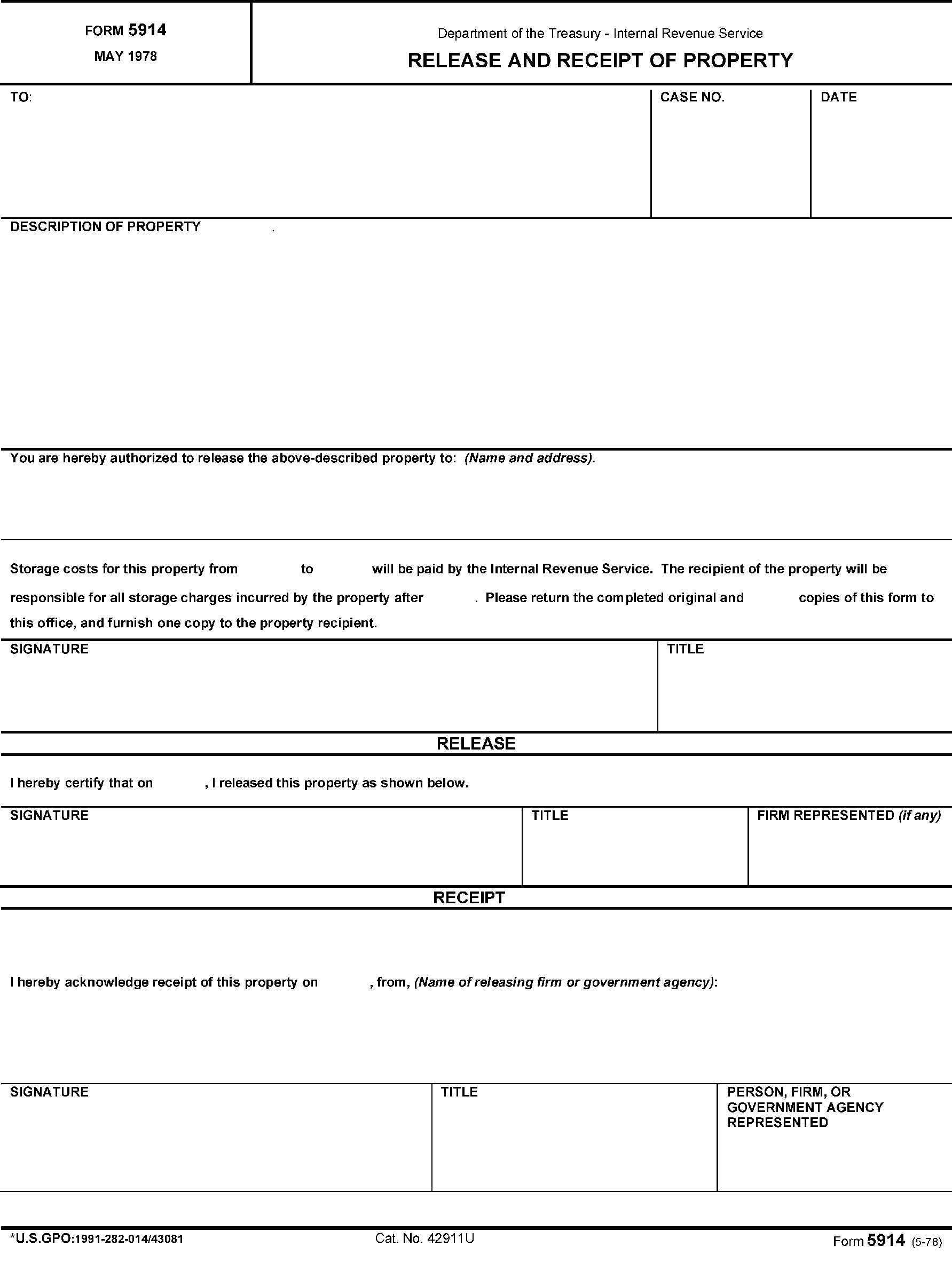

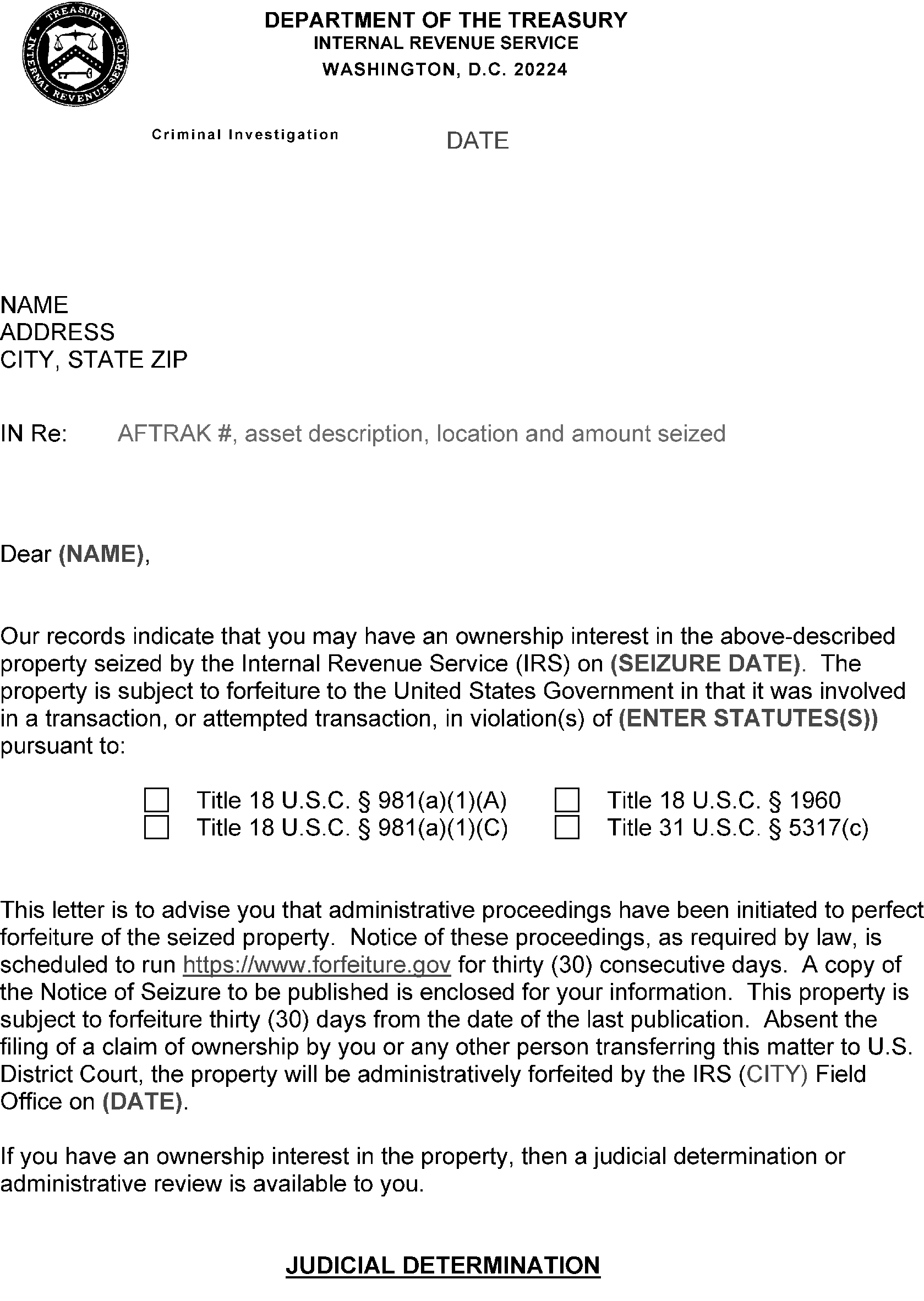
Please click here for the text description of the image.

Please click here for the text description of the image.
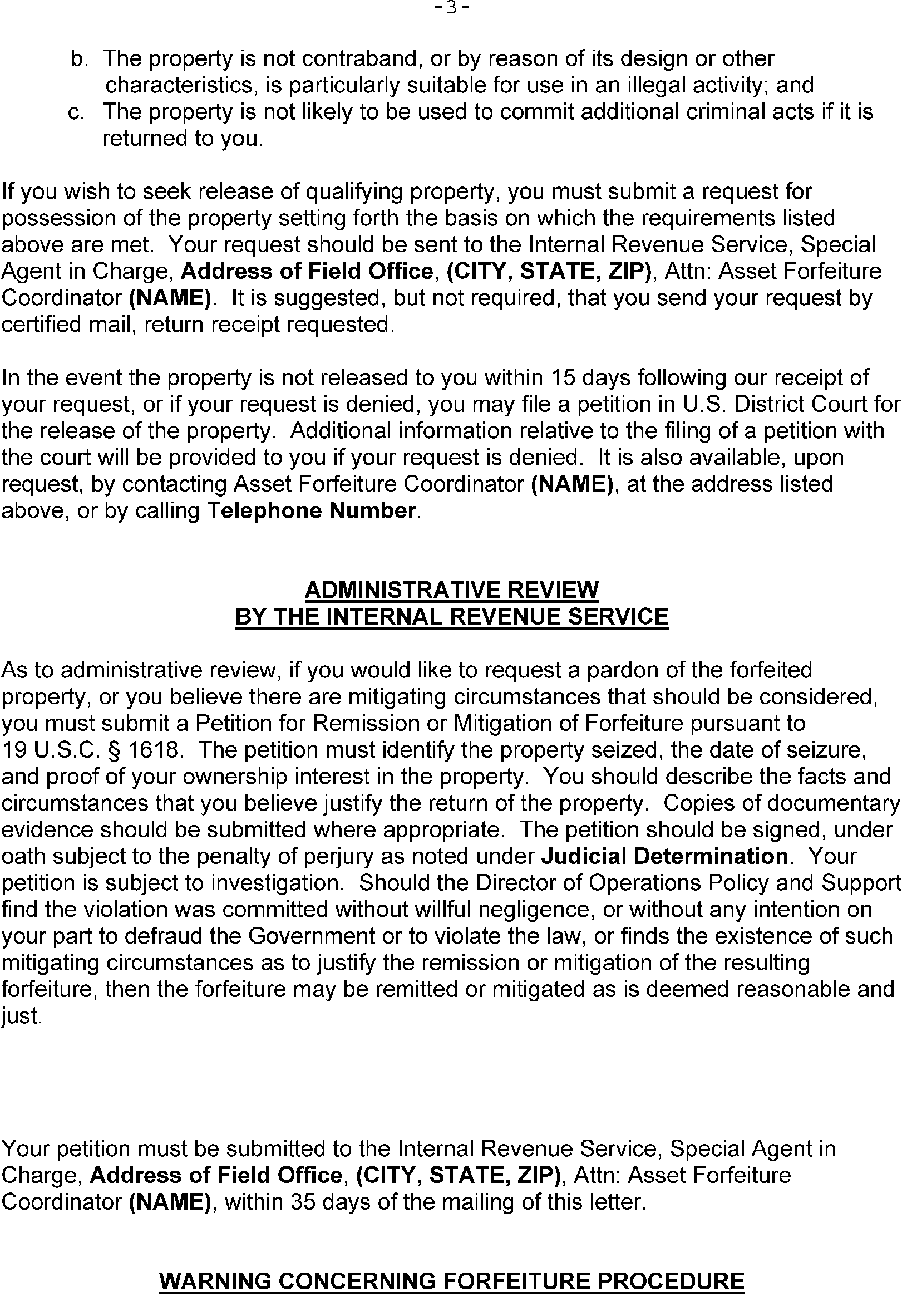
Please click here for the text description of the image.


Please click here for the text description of the image.
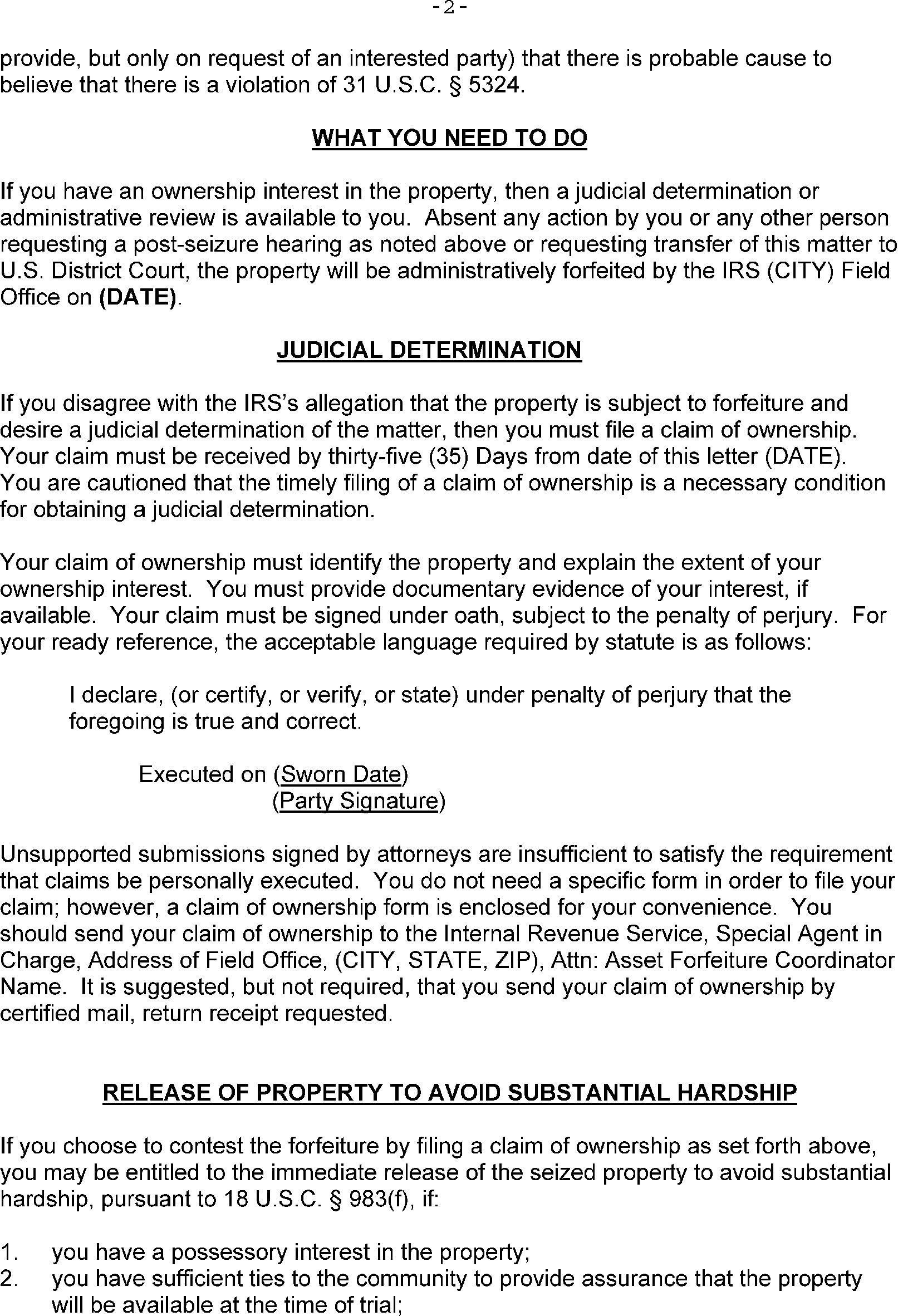
Please click here for the text description of the image.
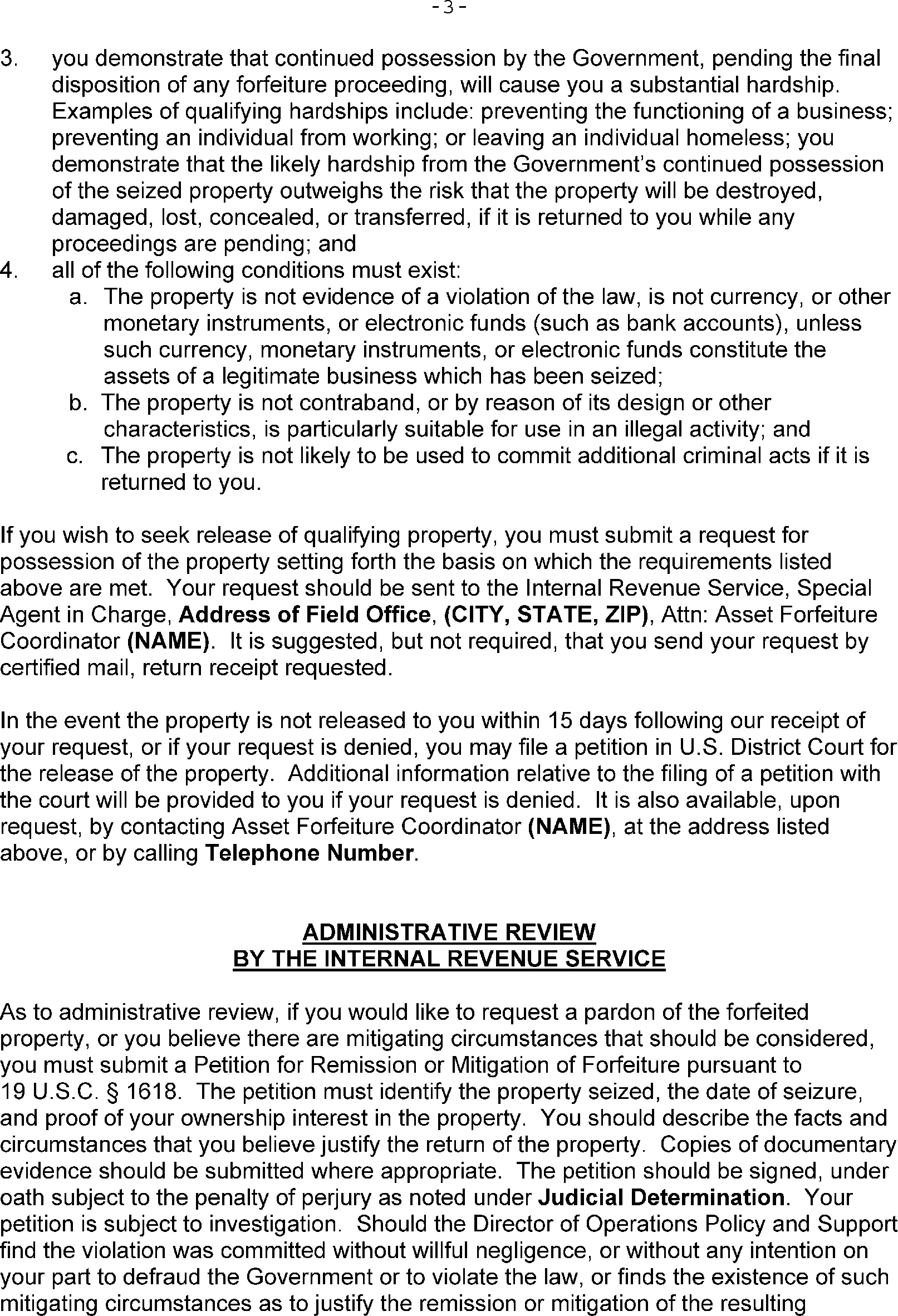
Please click here for the text description of the image.

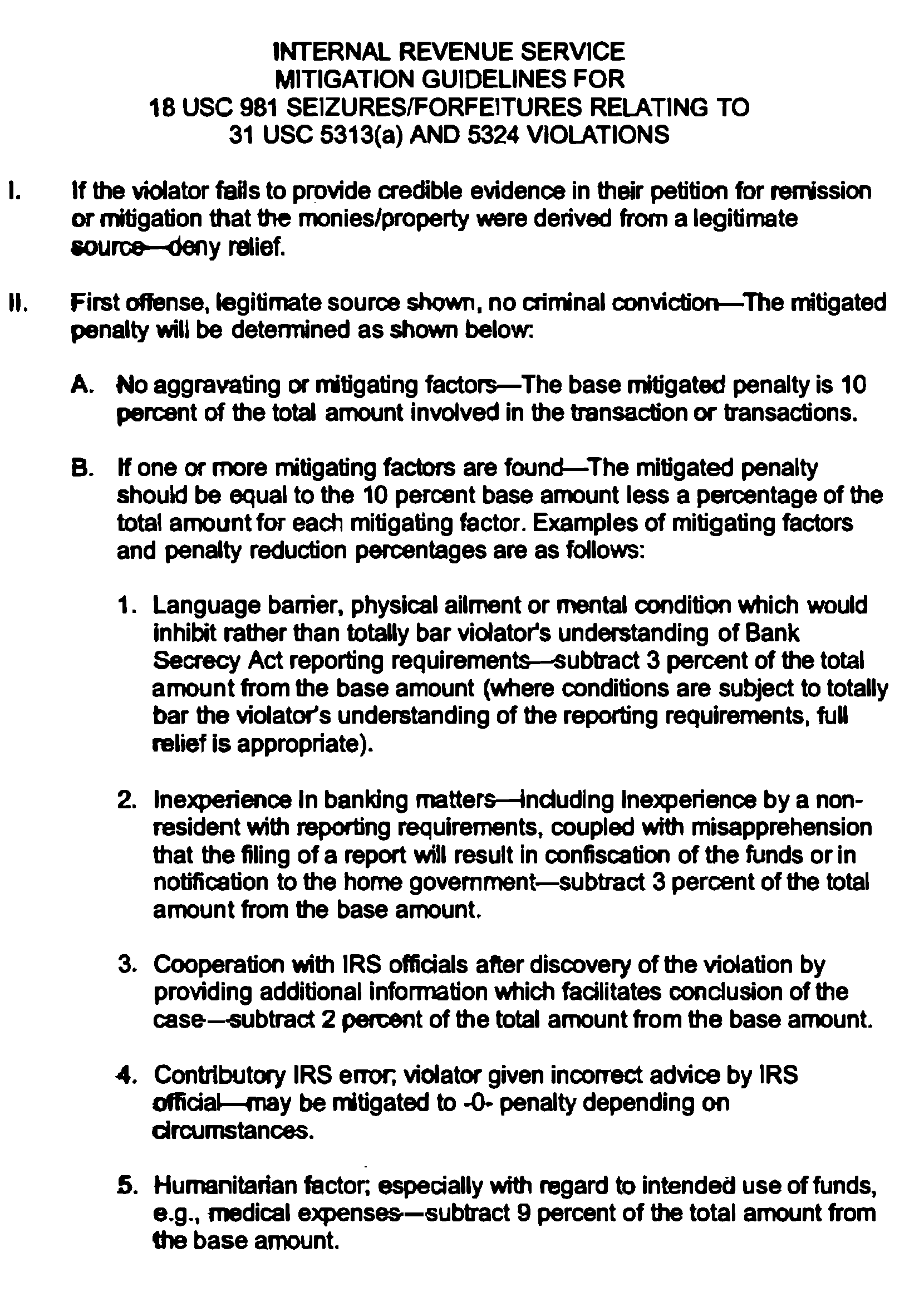
Please click here for the text description of the image.
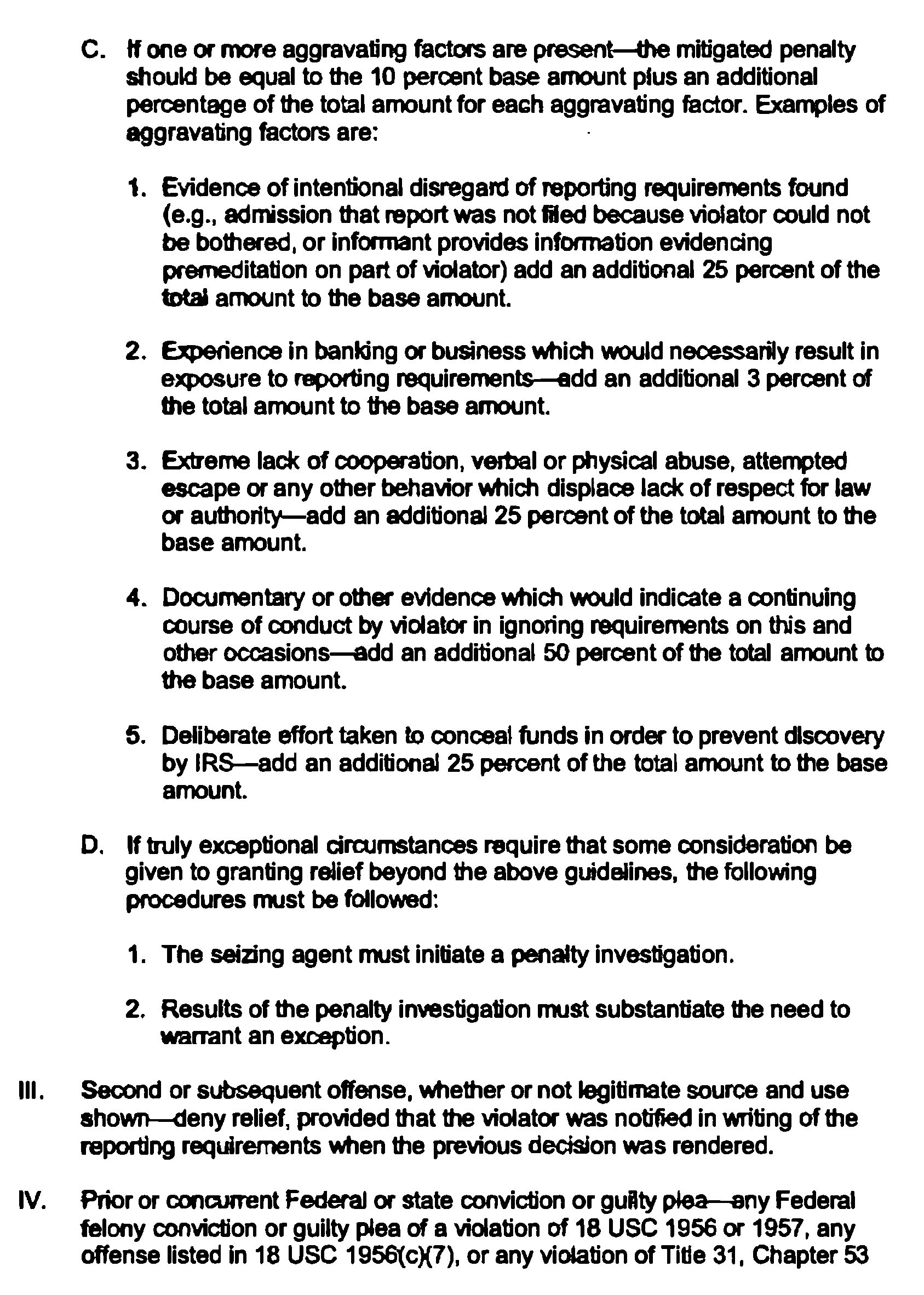
Please click here for the text description of the image.
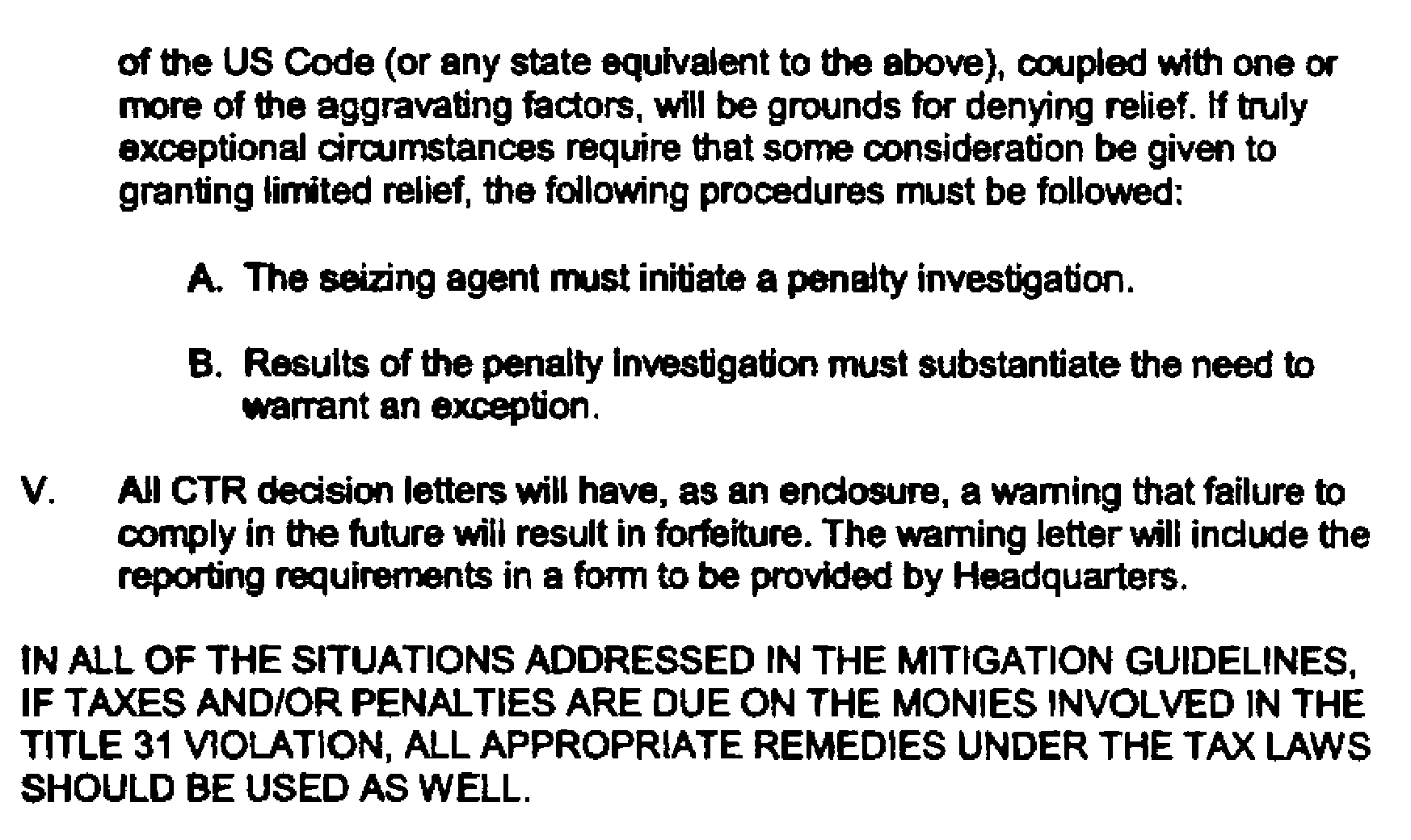


 )
or https:// means you've safely connected to the .gov website. Share sensitive information only on official, secure websites.
)
or https:// means you've safely connected to the .gov website. Share sensitive information only on official, secure websites.

